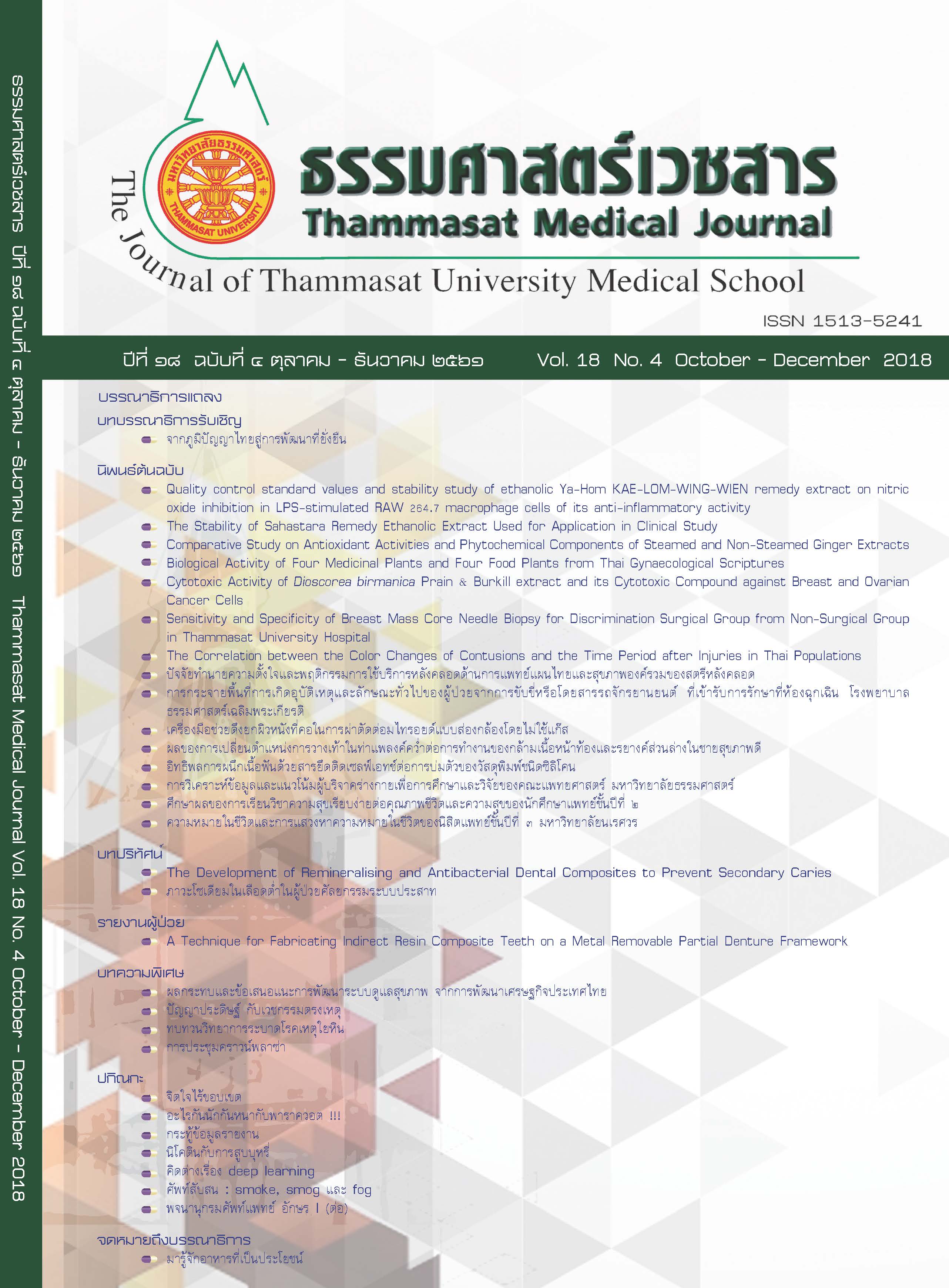The Effects of Foot Position Variations during Prone Plank on Abdominal and Lower Extremities Muscle Activations in Healthy Male Subjects
Keywords:
plank, electromyography, abdominal muscle, lower extremity muscle, foot positionAbstract
Introduction: The prone plank exercise is core stability exercise for general people, low back pain patients and athletes. The difference of hip positions due to foot variations influences stability of prone plank positions. However, there is no evidence to support the effects of foot position variations during prone plank on abdominal and lower extremity muscle activations. The purpose of this study was to investigate muscle activity of abdominal and lower extremity muscles during prone plank with different hip positions following foot position variations.
Method: Twenty healthy males participated in this study. They were recorded electromyography (EMG) and compared to the %MVC of rectus abdominis (RA), external abdominis oblique (EO), internal abdominal oblique (IO), rectus femoris (RF), adductor longus (ADL), tensor fasciae latae (TF), vastus medialis oblique (VMO) and vastus lateralis (VL) between prone plank with 3 different hip positions following foot position variations that were hip adduction (AD), neutral position of the hip (NP) and hip abduction (AB).
Results: The result showed that there was no significant difference of EO, RA, RF, VMO and VL EMG activities. However, there were significant differences in the use of IO, TF and ADL EMG activities between the deferent hip positions following foot position variations during prone plank. The IO and TF muscles functioned the most during AB while the least during AD position. The ADL muscles functioned the least particularly during NP position.
Discussion and Conclusion: The alteration of foot position during prone plank exercise was able to change IO, TF and ADL activities. Therefore, the difficulty level of prone plank exercise could be adjusted in according to the alteration of foot position. The training program should start from hip adduction to the greatest extent with hip abduction.



